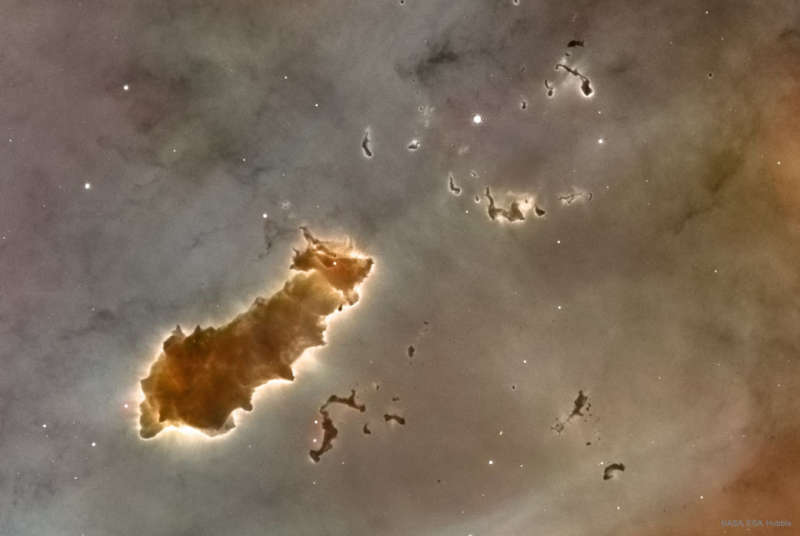Explanation: They are not alive -- but they are dying. The unusual forms found in the Carina nebula, a few of which are featured here, might best be described as evaporating. Energetic light and winds from nearby stars are breaking apart the dark dust grains that make the iconic forms opaque. Ironically the figures, otherwise known as dark molecular clouds or bright rimmed globules, frequently create in their midst the very stars that later destroy them. The floating space structures pictured here by the orbiting Hubble Space Telescope span a few light months. The Great Nebula in Carina itself spans about 30 light years, lies about 7,500 light years away, and can be seen with a small telescope toward the constellation of Keel(Carina).
1999 2000 2001 2002 2003 2004 2005 2006 2007 2008 2009 2010 2011 2012 2013 2014 2015 2016 2017 2018 2019 2020 2021 2022 2023 2024 2025 |
Yanvar' Fevral' Mart Aprel' Mai Iyun' Iyul' Avgust Sentyabr' Oktyabr' Noyabr' Dekabr' |
NASA Web Site Statements, Warnings, and Disclaimers
NASA Official: Jay Norris. Specific rights apply.
A service of: LHEA at NASA / GSFC
& Michigan Tech. U.
|
Publikacii s klyuchevymi slovami:
carina nebula - tumannost' Kilya - Molekulyarnye oblaka
Publikacii so slovami: carina nebula - tumannost' Kilya - Molekulyarnye oblaka | |
Sm. takzhe:
Vse publikacii na tu zhe temu >> | |
